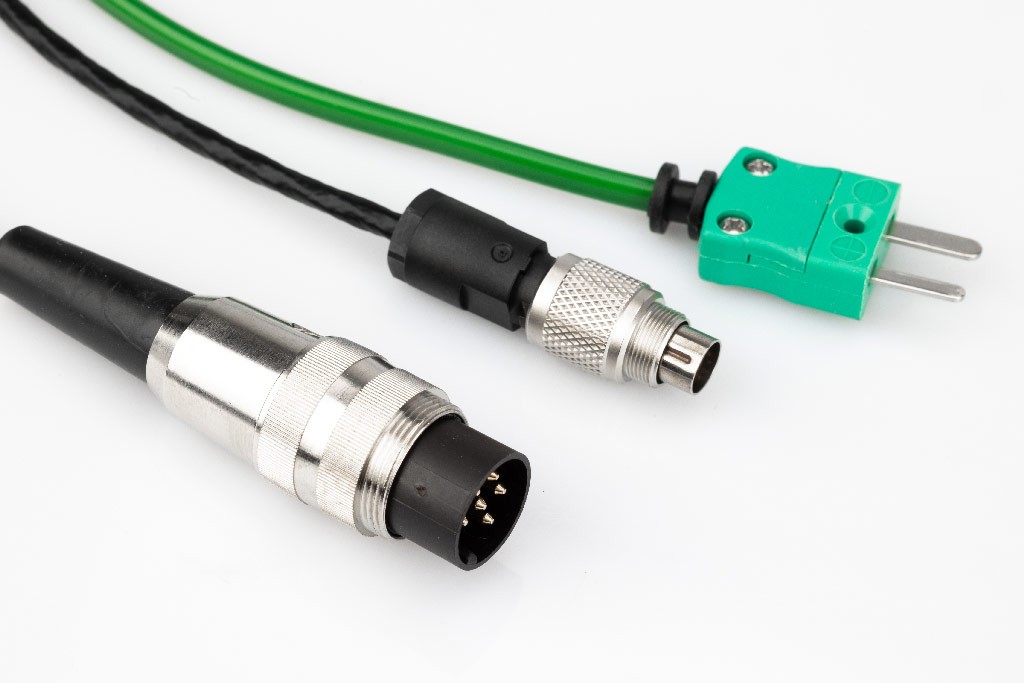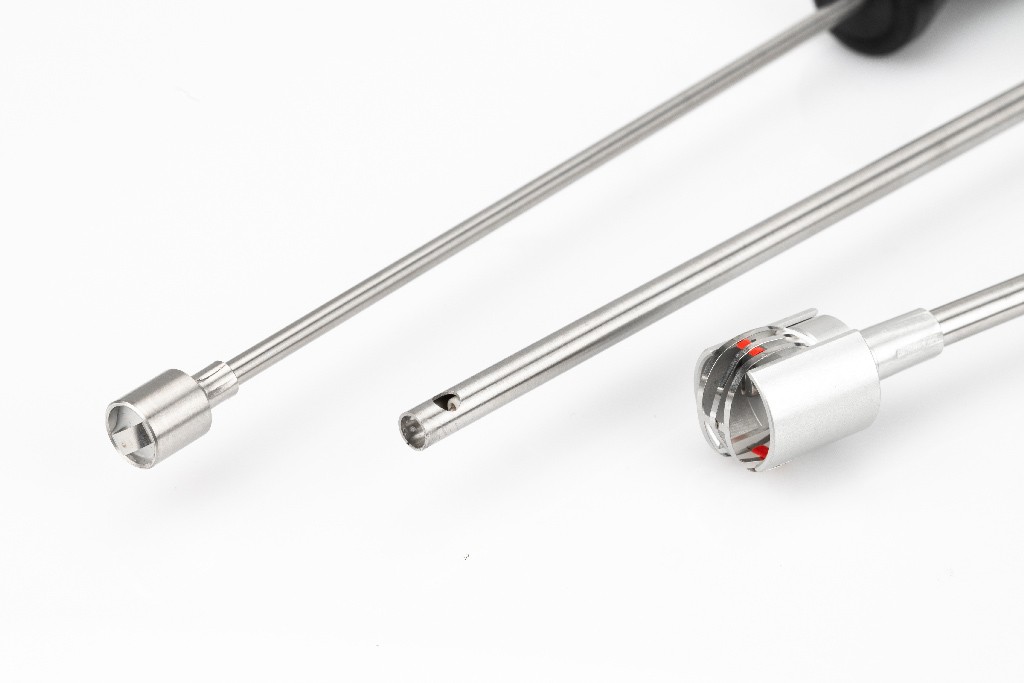The Ultimate Digital Thermometer Guide — Types, Features & Probes

Finding the best digital thermometer for your application can be overwhelming, especially when there are so many different types, features and probes to choose from. But taking the time to get it right will ensure your temperature checks are as accurate and pain-free as possible.
By the end of this guide, you should be able to identify which type of thermometer, sensor and probe you need and understand the different types of features you might like yours to have.
Digital thermometer types
First, we’ll break down the main types of digital thermometers. Which one you choose will depend on your application and whether you’d like the added benefit of compatibility with a PC or handheld device for paperless monitoring.
Probe thermometers
Probe thermometers are the most common kind of digital thermometers. They can be used for a wide range of applications, and there are many different types of both instruments and probes suitable for different applications. You can choose a digital thermometer with a probe permanently attached or one with interchangeable probes, ideal for using one instrument for multiple types of temperature checks.
Infrared thermometers
Infrared thermometers are only appropriate for applications where it is difficult to use a surface probe thermometer, like surfaces that are extremely hot or hard to reach, or where a faster response is required. They need to be used carefully and taken good care of in order to achieve accurate readings.
USB and Wi-Fi data loggers
Data loggers automatically take readings at user-programmed intervals. USB data loggers store the readings within the instrument, ready to be transferred to your PC using a connector, whereas Wi-Fi loggers automatically transmit the readings to your computer. Once sent to your PC, they can be viewed, downloaded and shared.
These are most commonly used for ambient readings, such as fridge/freezer temperatures and room temperature or humidity. But they can also be used to track the internal temperature of perishables over a period of time, such as during transportation.
Bluetooth thermometers
Bluetooth thermometers pair with your handheld device using Bluetooth connectivity. Simply take your temperature, and at the touch of a button, it will transmit the reading to your device, where it can be viewed, stored and downloaded using our free software. Our Bluetooth thermometers include food probes, infrared devices and a dishwashing thermometer for recording rinse cycle temperatures.

Sensor types
The sensor describes the technology that measures the temperature. There are three types of sensors to choose from, and each performs slightly differently. Each one has a different connector between the sensor and probe, so you need to make sure that both have the same sensor type and are compatible.
Thermocouple
Thermocouples are the most popular sensor type because of their wide temperature ranges, fast readings and affordable price. Though their accuracy is more than sufficient for most applications, it’s not quite as good as thermistors or RTDs. There are many different types of thermocouples. We predominantly use the two most common: Type T and Type K. Make sure you purchase the correct one for your instrument; they are colour coded to help with this. You’ll find the widest range of probe types for thermocouples, so they’re ideal for many applications.
Best for: Speed, range, versatility & price
Thermistor
Thermistor probes have the narrowest temperature range out of the three types of sensors. Compared to thermocouples, they also have slower response times and a slightly higher price point. Their advantage is that they have higher accuracy. Thermistor thermometers have a high system accuracy which is guaranteed for the life of the thermometer, giving you confidence they are consistently accurate. In addition, they can also be paired with calibration test caps for quick, easy and economic accuracy checks. You’ll find a good range of probe types to pair with thermistors, ideal for most applications.
Best for: Accuracy, versatility & price
RTD/PT100
The most expensive type of sensor, PT100 thermometers are similar to thermistors. However, they have a slightly wider temperature range (though not as wide as thermocouples), and the highest accuracy. Like thermistors, they have a high system accuracy and can be paired with test caps for accuracy checks. The range of PT100 probes available is smaller than for thermocouples and thermistors, but you’ll still find the most common types available.
Best for: Accuracy & range

Main digital thermometer features
As you now know, thermometers have different response times, accuracies and ranges. Here we’ll dive into what each one means, to give you an idea of what kinds of numbers to look out for.
Accuracy
Some applications have less time pressure, but accuracy is really important. Certain perishables like medicines and vaccinations may need to be stored at very specific temperatures, while high accuracy is essential when buying a reference thermometer for validation checks.
Accuracy is shown using the symbol ±. If a thermometer has an accuracy of ±0.5 °C, it means the readings could be 0.5 °C above or below the true temperature of the item you’re measuring. For example, if testing the temperature of boiling water (100 °C) with a thermometer that has an accuracy of ±0.5 °C, it could read between 99.5 °C and 100.5 °C and still be within specification.
If digital thermometer accuracy is your priority, opt for a thermometer with an accuracy of ±0.4 °C or less. Our calibration thermometers have an accuracy of up to ±0.03 °C.
Speed
Your application will determine how fast you need your thermometer to read. For example, if you’re cooking time-sensitive dishes that can easily become overdone or if you’re completing many checks at once, a fast thermometer can make a big difference to the quality and time efficiency of your work. A good speed is three seconds or less. Our fastest-reading thermometer is the Thermapen ONE which reads temperatures in one second.
Range
Range is the highest and lowest temperatures you would like to be able to read with your thermometer. Some thermometers are specialised for particularly high or low temperatures, while others have a wide range. Often, thermometers have a different accuracy for the middle of their ranges than their outer limits.
Find out what temperatures you’ll be reading to find a thermometer that performs best for that range.
Resolution
The resolution of a thermometer is the number of decimal places you would like to see when reading your temperatures, i.e. 1 °C, 1.1 °C or 1.11 °C. This is similar to accuracy because more decimal places give a more precise reading. Some thermometers have a switchable resolution.
Additional digital thermometer features
There are a few additional nifty features digital thermometers can have to make your checks easier:
Alarm — audible alerts for out-of-range temperatures
Auto power-off — switches off after a set period to prolong battery life
Backlight — clear temperatures in dim lighting
CalCheck — accuracy verification at the touch of a button
Folding probes — tucks neatly into the instrument for portability and safe storage
Hold function — pause readings for easy recording
Max/min function — view the highest and lowest temperatures over a period of time
Multiple channels — read temperatures from multiple probes/sensors at once
Rotating display — quickly read from any angle
Waterproof casing — protects against wet environments

Probe types
Using a probe that is specifically designed for your application will enable you to complete your checks as accurately and easily as possible. Some thermometers come with a permanently attached probe, while others have interchangeable probes that can be purchased separately. At ETI, we have a huge range of thermocouple, thermistor and RTD probes to choose from.
Penetration probe
Penetration probes are the most common type, so they come in a wide variety. There are waterproof, high-temperature and fast response options. Colour-coded probes help avoid cross-contamination in kitchens, while needle probes are best for small or delicate applications. There are also a variety of probe lengths, handle shapes and lead types to choose from, so you can make sure your probe works perfectly for you.
Gas and air probes
Air probes are important for lots of different industries, even for beekeeping. One of the most common is HVAC. We have air probes to pair with thermocouple, thermistor and RTD instruments.
Surface probes
Using a good quality, purpose-built surface probe that is suitable for the application is very important for accuracy. From our unique ribbon probes that ensure secure contact with surfaces like hotplates, to pipe probes specifically made to fit around curved pipes, we’ve got a range of surface probes for different uses. There are even between-pack probes for quickly checking the temperature of cold food deliveries.
Simulation probes
These are designed to accurately reflect the storage temperature of an item. People often use fridge/freezer thermometers or room thermometers to decide whether an item is being stored at a safe temperature. But simulation probes are much more accurate than that because they reflect the internal temperature of a product such as food or medicine. This means that, for example, if a fridge door is left open and the air temperature warms up, you’ll know whether the product has also fallen out of range.
Conclusion
Following this guide, whilst considering your application carefully, should have given you a good idea of the different thermometer choices on offer and which will be most suitable for you. If you’re still unsure of which one to go for, our friendly and experienced sales team are always happy to advise. Please contact us here to speak to a member of the team.
You might also like:
Beginner’s Guide to HACCP Temperature Requirements
What is a Calibration Certificate & Do I Need One?
5 Best Catering Thermometers for Your HACCP Plan